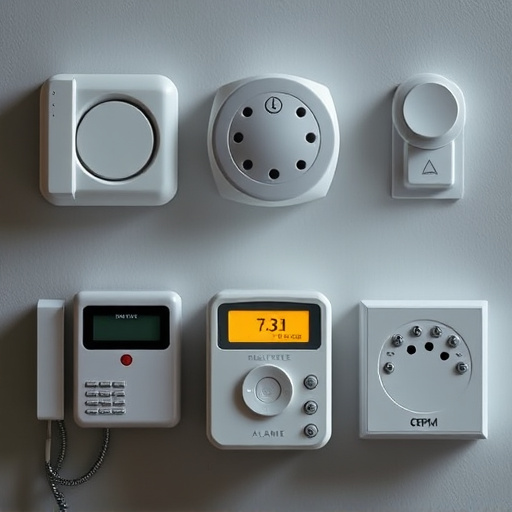Personal alarm ranges in buildings, equipped with location-sharing technology, revolutionize personal safety by swiftly and accurately emitting distress signals, enhancing emergency response times within complex structures. These beacons, integrated into building infrastructure, provide users with discreet means to call for help, empowering individuals while ensuring prompt assistance across diverse venues, from schools to high-rises. However, implementing these technologies demands robust encryption and transparent data practices to safeguard user privacy.
Personal safety beacons with location sharing are transforming the way we think about personal security. This cutting-edge technology, known as personal alarm range in buildings, offers a lifeline in emergency situations. Understanding how these devices work and their diverse applications can greatly enhance safety measures. From outdoor adventures to indoor protection, this article explores the benefits of location sharing, delving into the ethical considerations that ensure user privacy while harnessing the power of these innovative tools.
- Understanding Personal Safety Beacons: A Lifesaving Technology
- The Role of Location Sharing in Emergency Situations
- Advantages and Applications of Personal Alarm Range in Buildings
- Ensuring Privacy and Security: Ethical Considerations for Location Sharing Devices
Understanding Personal Safety Beacons: A Lifesaving Technology
Personal safety beacons, often equipped with location-sharing capabilities, are innovative technologies designed to revolutionize personal security. These devices serve as a crucial tool for individuals who may find themselves in perilous situations, especially within confined spaces like buildings. By emitting a distinct alarm and sharing precise location data, they can quickly alert emergency services and first responders, ensuring timely intervention.
The effectiveness of these beacons lies in their ability to overcome the challenges posed by indoor environments, where traditional GPS signals might be weak or unavailable. With advanced triangulation methods and dedicated network infrastructure, personal safety beacons can pinpoint a user’s location within a building, making it easier for rescue teams to navigate complex structures and reach the person in need promptly. This technology is a game-changer, offering peace of mind and enhanced security for individuals who frequently work or transit through large buildings.
The Role of Location Sharing in Emergency Situations
In emergency situations, location sharing through personal safety beacons plays a pivotal role, especially within buildings where navigation can be challenging. These devices allow individuals to quickly and accurately transmit their precise whereabouts, enabling rapid response from emergency services. By integrating location-sharing technology with personal alarms, users can ensure help arrives swiftly, even in large or labyrinthine structures.
The Personal Alarm Range in Buildings is a significant factor, as it determines the level of assistance one can expect. Advanced beacons offer wider ranges, allowing for more extensive coverage within a building’s interior, which is crucial for comprehensive safety and peace of mind.
Advantages and Applications of Personal Alarm Range in Buildings
The implementation of personal alarm ranges in buildings offers a multitude of advantages, especially for safety and emergency response. These systems allow individuals to quickly and discreetly alert others or emergency services if they feel unsafe, making them invaluable in public spaces, residential areas, and even within private homes. With advanced location-sharing capabilities, users can pinpoint their exact position, enabling swift assistance regardless of the building’s size or complexity.
The applications are vast; from schools and offices to hotels and high-rise apartments, these beacons ensure that personal safety is a top priority. They provide peace of mind, empower individuals to take charge during risky situations, and have the potential to save lives by facilitating quicker response times for emergency personnel. Moreover, they offer an extra layer of security, especially for those who live or work alone, as the ability to trigger an alarm from any location within a building can deter potential threats and ensure prompt help.
Ensuring Privacy and Security: Ethical Considerations for Location Sharing Devices
Ensuring privacy and security is a paramount concern when introducing devices that facilitate location sharing, especially in personal safety beacons. While these tools offer valuable peace of mind, developers and users must navigate ethical boundaries to safeguard sensitive data. The Personal Alarm Range in Buildings, for instance, should not become a tool for unauthorized tracking or surveillance. It’s crucial to implement robust encryption methods to protect user locations from prying eyes.
Furthermore, transparency about data collection practices is essential. Users need clear understanding of who has access to their location information and how it’s used. Ethical guidelines should be established to limit data sharing with third parties without explicit consent. This ensures that personal safety beacons remain a tool for empowerment rather than a means for invasion of privacy.
Personal safety beacons with location sharing technology have the potential to revolutionize emergency response, especially within buildings where communication can be challenging. By leveraging the power of this innovative concept, we can enhance personal alarm range in buildings and ensure faster, more efficient rescue operations. However, as we embrace these advancements, it’s crucial to address ethical considerations regarding privacy and security, striking a balance that safeguards individuals while maximizing the benefits of location sharing devices.
